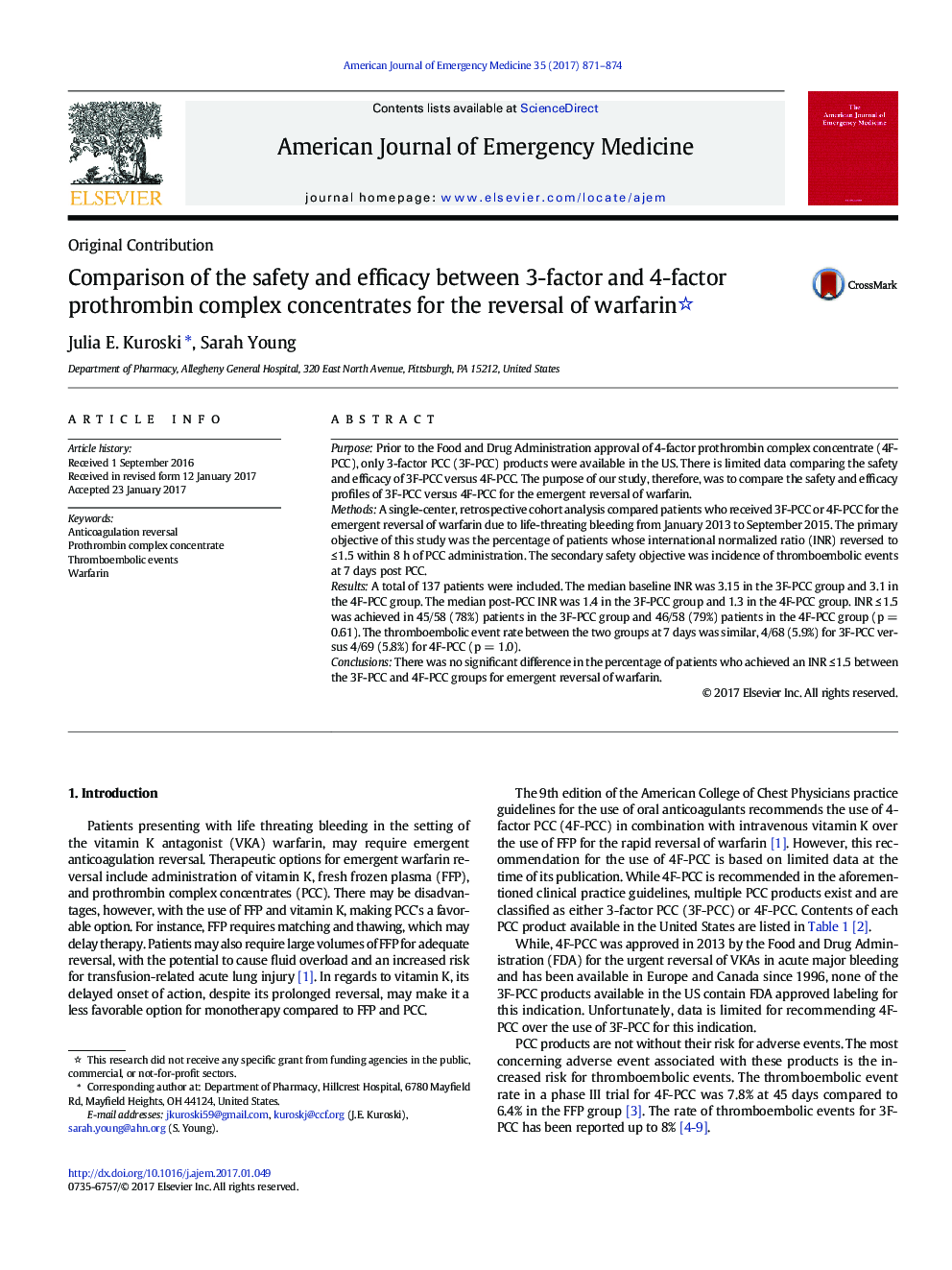| Article ID | Journal | Published Year | Pages | File Type |
|---|---|---|---|---|
| 5650897 | The American Journal of Emergency Medicine | 2017 | 4 Pages |
PurposePrior to the Food and Drug Administration approval of 4-factor prothrombin complex concentrate (4F-PCC), only 3-factor PCC (3F-PCC) products were available in the US. There is limited data comparing the safety and efficacy of 3F-PCC versus 4F-PCC. The purpose of our study, therefore, was to compare the safety and efficacy profiles of 3F-PCC versus 4F-PCC for the emergent reversal of warfarin.MethodsA single-center, retrospective cohort analysis compared patients who received 3F-PCC or 4F-PCC for the emergent reversal of warfarin due to life-threating bleeding from January 2013 to September 2015. The primary objective of this study was the percentage of patients whose international normalized ratio (INR) reversed to â¤Â 1.5 within 8 h of PCC administration. The secondary safety objective was incidence of thromboembolic events at 7 days post PCC.ResultsA total of 137 patients were included. The median baseline INR was 3.15 in the 3F-PCC group and 3.1 in the 4F-PCC group. The median post-PCC INR was 1.4 in the 3F-PCC group and 1.3 in the 4F-PCC group. INR â¤Â 1.5 was achieved in 45/58 (78%) patients in the 3F-PCC group and 46/58 (79%) patients in the 4F-PCC group (p = 0.61). The thromboembolic event rate between the two groups at 7 days was similar, 4/68 (5.9%) for 3F-PCC versus 4/69 (5.8%) for 4F-PCC (p = 1.0).ConclusionsThere was no significant difference in the percentage of patients who achieved an INR â¤Â 1.5 between the 3F-PCC and 4F-PCC groups for emergent reversal of warfarin.
